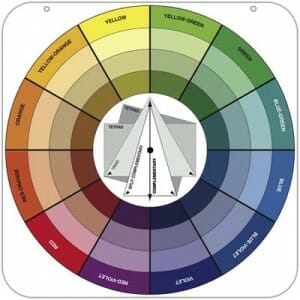
Colors play a crucial role in creating a shopping experience that attracts customers and encourages purchasing decisions. A well-thought-out color scheme in a commercial building can positively influence customer feelings, enhance brand recognition, and ultimately, increase sales.
Color psychology, a fascinating branch of science, studies the way colors impact human emotions and behavior. Every color has a unique meaning and can evoke a variety of emotions, ranging from passion and excitement to calmness and serenity.
By carefully selecting the right paint colors that resonate with your brand and target audience, you can create an immersive and unforgettable shopping experience. Therefore, it is crucial to choose the right paint colors for a retail store that create a desired atmosphere and mood, capturing the attention of potential customers and making them feel welcome.
Taking a closer look at the psychology of colors can help you understand how to use them in your store’s interior design. In this post, we discuss the best wall colors for retail stores as well as take a deep dive into the psychology of color.
Warm colors like red, orange, and yellow exude excitement, high energy, and optimism. They inspire a sense of urgency and grab attention, which is why they are perfect for fast-food establishments and clearance sale sections. However, using warm colors too much can be overwhelming for customers, so it’s important to balance them with neutral tones.
On the other hand, cool colors like greens and blues create a calming atmosphere that’s perfect for making customers want to linger and browse. These colors work well in retail spaces selling high-end products or promoting relaxation, like spas, boutiques, or bookstores.
Mixing warm and cool colors can also create an excellent balance for various retail environments depending on the type of products and the message you want to relay about your brand. Overall, the careful selection of colors in any retail space can either encourage or deter customers from making a purchase. That’s why taking the time to create a balanced coloring scheme is so important.
Selecting a color scheme based on your target audience and the type of products you sell is essential to create a harmonious retail environment. By aligning your color choices with your brand identity, you can reinforce your brand message, increase brand recognition, and positively influence customers’ purchasing decisions.
Considering the message you want to convey based on color is crucial for capturing your target market’s attention. For example, a store that sells eco-friendly products might use various shades of green to emphasize sustainability and environmental consciousness. This choice of color will not only appeal to eco-conscious customers but also make your store memorable and easily recognizable.
On the other hand, a luxury store might opt for gold, black, or other rich hues to exude an air of sophistication and exclusivity. These colors can create an upscale atmosphere, attracting customers who seek high-end products and experiences. By using colors that resonate with your target market, you can create a strong brand image that fosters customer loyalty and repeat business.
Color psychology is a fascinating subject that can have a significant impact on the success of your retail store. The right choice of colors can influence your customers’ emotions and create a desired atmosphere, leading to a better shopping experience.
When selecting color schemes for retail store interior designs, it’s important to understand the psychological effects of each color. For example, bright colors give a sense of spaciousness, making even small retail spaces feel larger. Similarly, darker shades can add warmth and coziness to a space, depending on the intended aesthetic.
Furthermore, a retailer can use color to highlight specific products, with bold colors drawing customers’ attention to those items. Using neutral tones for store walls can provide a clean and sophisticated backdrop to allow the merchandise to shine.
By taking color psychology into account, you can create a well-designed retail space that attracts customers, engages their emotions, and encourages them to make a purchase. This can be the difference between a successful store and one that fails.

In addition to understanding the psychological effects of colors, retailers should also be mindful of how those colors are used throughout their stores. Color transitions create a visual journey for customers and guide them through the shopping experience, starting from when they enter the store till they reach their desired product.
Creating distinct color zones divided by color transitions can help you achieve this goal. For example, using different hues in each zone can create an inviting atmosphere that encourages customers to explore the entire store. By carefully placing bright colors near high-value items and neutral tones near the checkout area, you can subtly lead customers toward making a purchase without being too obvious about it.
Overall, selecting the right combination of colors can help enhance your retail environment and influence customer decisions. It is vital to remember that colors can have both a psychological and physical effect on your customers and should be utilized accordingly. By considering color psychology in their store design, retailers can create an eye-catching atmosphere that attracts customers and encourages them to shop.
The art of selecting the right colors for your retail space can work wonders in making your customers feel welcomed and comfortable. It’s crucial to consider the layout of your store, the type of merchandise you sell, and your target audience when determining the best color for retail store walls.
By understanding color psychology and its role in interior design, you can create an environment that not only looks great but also positively affects your customers’ shopping experience. Utilize colors to differentiate sections of your store, highlight merchandise, and create a sense of space. Warm colors like red, orange, and yellow are perfect for drawing attention while cooler tones like blue, green, and purple are great for creating a soothing atmosphere.
Remember, the aim is to increase customer traffic and make visiting your store an enjoyable experience. So, invest some time and effort into selecting the right colors for your retail store walls and watch your sales grow!
At BCI Painting, we understand how important color is in retail environments. With over 20 years of experience, our professional team is ready to help you choose the perfect color scheme for your store.